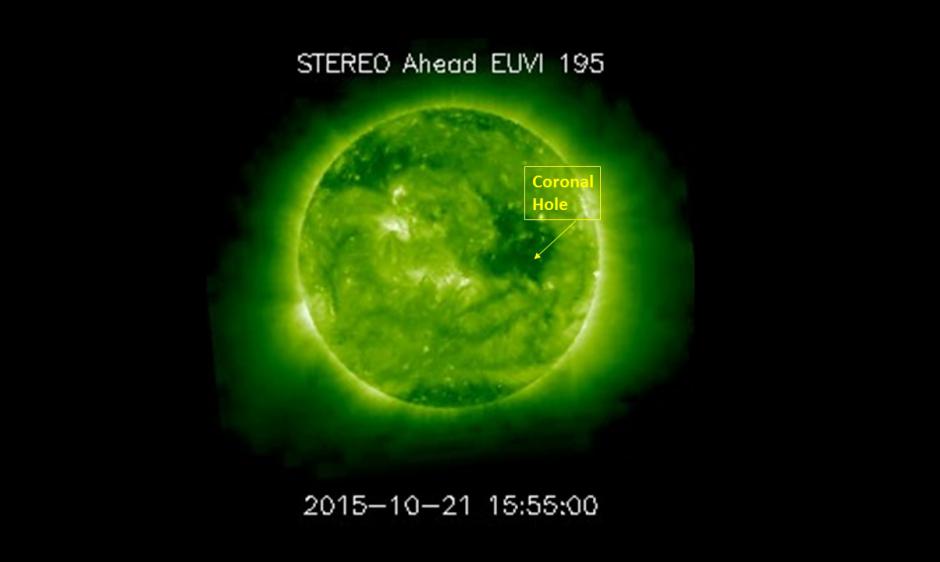
It can sometimes be difficult to predict the timing and intensity of geomagnetic storming and correspondingly, the aurora; but sometimes it isn’t.
How do we know? Certain solar features sometimes change little throughout an entire solar rotation (about 27 days). Coronal holes (exceptionally low density areas in the corona with open magnetic field lines extending to or beyond Earth) are one such phenomena. Space Weather Prediction Center (SWPC) forecasters closely monitor and analyze coronal holes in order to predict likely solar wind (outward flowing solar particles) speed increases and interplanetary magnetic field (IMF) changes. When solar wind increases, it strengthens the force exerted on the Earth’s magnetosphere, usually leading to geomagnetic disturbances; such as minor (G1) or greater storming levels.
One such coronal hole rotated into a geoeffective (Earth-connected) position from 7 through 8 October increasing the solar wind speeds from an average of 300-400 km/s to 700-800 km/s. These high speeds had pronounced effects on Earth’s magnetosphere and led to G1-G3 (Minor to Strong) periods of geomagnetic storming. Forecasters study data and analyze imagery from NASA’s STEREO (Solar Terrestrial Relations Observatory) Ahead spacecraft to keep track of certain solar features, such as coronal holes. The STEREO-A platform is in an orbit that is nearly the same distance from the Sun as the Earth; but is currently just behind and to the east of the Sun as seen from Earth. This position allows a look at the far side of the Sun (the side not currently visible from Earth), so SWPC forecasters can keep track of certain solar features, such as the coronal hole, and look for changes in structure or strength.
Current analysis of STEREO-A imagery reveals the coronal hole responsible for the 7-8 Oct storming, has changed little and still has associated solar wind speeds of near 800 km/s. Long-range expectations are that this positive polarity coronal hole will rotate into a geoeffective position between 2 to 5 November and may very well cause one to two days of enhanced geomagnetic storming and aurora again.